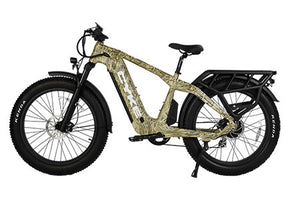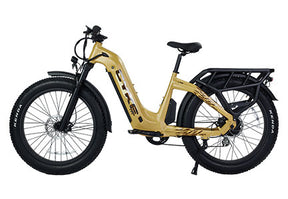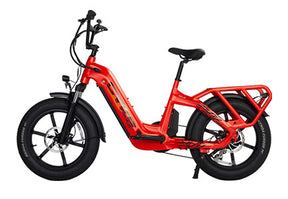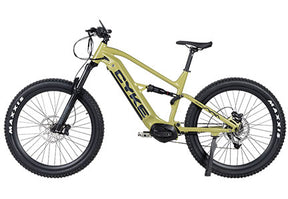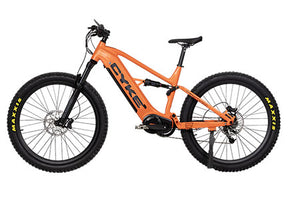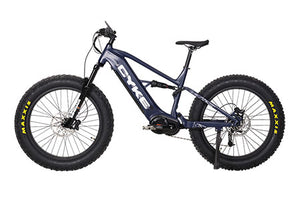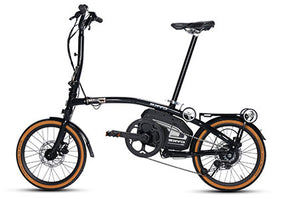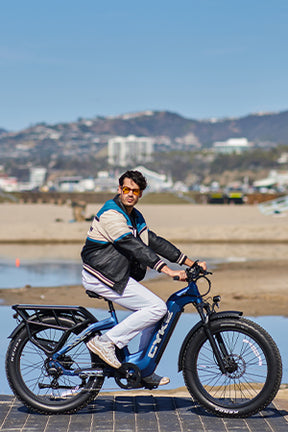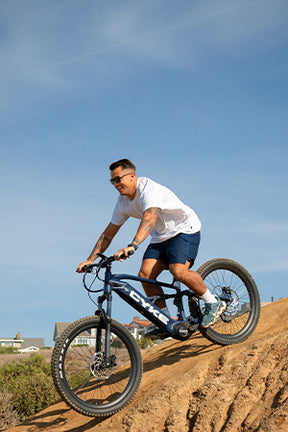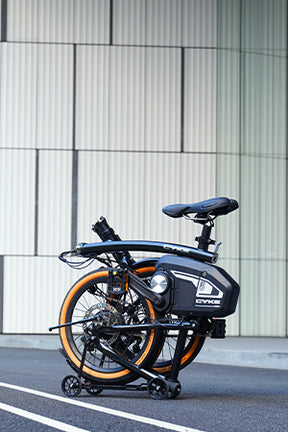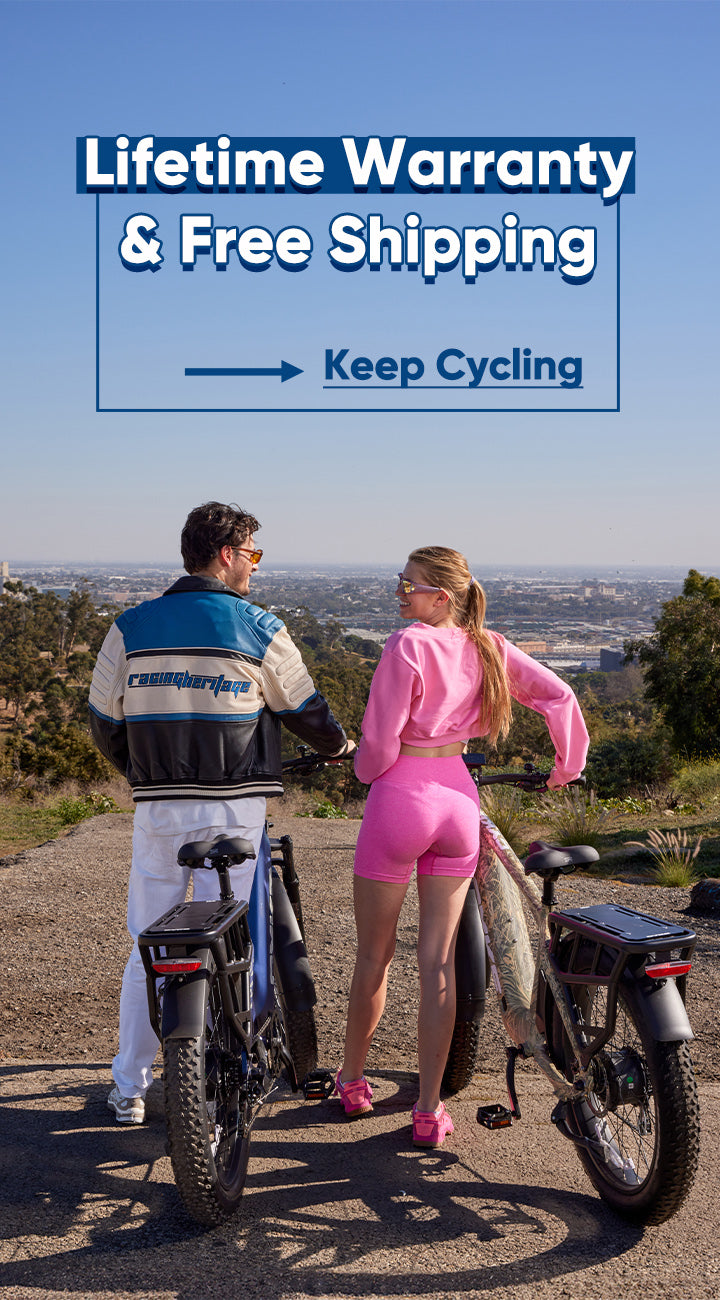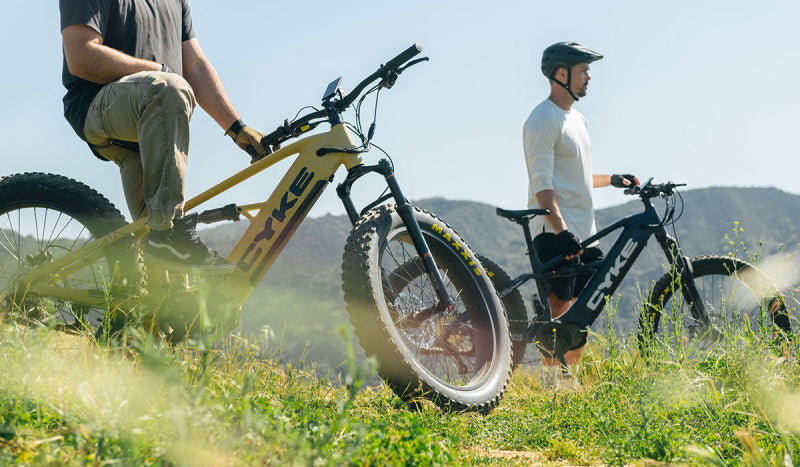Featured in this posts
Dive into the Suspension System of Soft Tail MTB
In the world of cycling, the debate between soft-tail and hard-tail suspension systems has always sparked discussions among cycling enthusiasts. The choice between a rear suspension-equipped Softail frame and a rigid hardtail frame can greatly impact the riding experience and performance. Let's delve deeper into the nuances of bike suspension types and explore the intricacies of Full Suspension Electric Bikes.

Definitions
Simply put Softail frame and hard tail frame differentiate with the presence or absence of rear suspension. An e-bike with rear suspension is a soft tail, sometimes equipping dual suspension system, while one without is a hardtail e-bike. Hard tails are generally simple in structure, common, and most widely used in flat terrain. Soft tails, on the other hand, are suitable for challenging riding environments, offering strong adaptability to tough terrains, and making them ideal for professional riders and advanced players.
There is a myriad of soft tail structures on the market. What has led to such a diverse range of options? The answer lies in the fact that the design of each soft tail frame is a result of comprehensive considerations and trade-offs. Different rear suspension systems determine various sensations during riding, therefore, the design of each Softail frame requires complex mathematical calculations and testing. Hence, there is no best full suspension electric bike, only the one that suits the specific needs.
Some Basic Technical Terms
Before diving into the comparison of several bike suspension system types, let’s get to know some basic technical terms so that you won’t get confused in the following parts, and be more professional while talking about or choosing Soft Tail MTB.
(1) "Compression Ratio" and "Pedal Kickback"

The compression ratio and pedal kickback are essential factors influencing the performance of the suspension system. Firstly, the compression ratio in a full suspension electric bike means that the rear shock absorber does not compress directly like a front fork; instead, it transmits force to the rear shock absorber through a series of links for compression. Therefore, the distance the rear wheel travels upward and the shock absorber's compression stroke are different, and the ratio between the two distances is the "compression ratio." By adjusting the parameters of the rear shock absorber, different compression ratios can be achieved for the same frame. The compression ratio changes depending on the position of the frame. For instance, the suspension effect of a coil spring is linear, meaning the required force to compress the shock absorber remains constant regardless of how much it compresses. Conversely, in a Soft tail MTB, the rear suspension often incorporates a progressively firm "compression ratio" towards the end of the stroke to prevent bottoming out and other issues. Engineers need to control the linkages to control the compression ratio for different riding sensations, leading to various rear suspension systems.
On the other hand, how the pedal kickback works is relatively straightforward - when the rear wheel encounters an obstacle, it lifts upward, pulling the chain, which then acts on the cog. This action causes the cog to rotate backward, driving the crank upward, and creating pedal kickback. Pedal kickback affects the stability of the bike, especially when traversing rough terrain. Therefore, engineers need to carefully adjust the suspension system to minimize pedal kickback.
(2) "Anti-Squat" and "Anti-Rise"

Anti-squat: Anti-squat is essentially a measure of how much the suspension resists pedal-induced bobbing while pedaling. More anti-squat means higher efficiency when climbing, but the trade-off might be reduced plushness or increased pedal kickback.
Anti-rise: Anti-rise measures how much the rear brake affects the suspension movement. When you apply the rear brake, the weight transfers, making the rear suspension rise or extend, but the force from the rear brake compresses the suspension, keeping the bike level and stable.
(3) Instant Center
When the suspension compresses (or extends), the rear wheel rotates around a "center" point, which might be easier to visualize on a single-pivot bike. The wheel is connected to the main pivot on the frame via a sturdy swing arm that rotates around the main pivot (the "center"). However, adding one or more links or rockers between the axle and the main pivot causes the suspension to not rotate around a fixed point on the frame and the swing arm effectively moves between different link pivot points. At any "instant," the "center" is no longer fixed at any pivot point. Instead, it can be considered a virtual point that changes position as the bike moves. This also means that the linkages can be designed with an "Instant Center" that can be located almost anywhere, even well beyond the bike's range.
Mainstream Soft Tail Suspension Systems
(1) Single Pivot

The rear wheel axle passes through the rear chain stay and directly connects to the main pivot on the frame, allowing the swing arm to directly drive the rear shock absorber. This makes it the simplest suspension design. In a true single-pivot scenario, the shock absorber is directly connected to the swing arm - a design made famous by Orange Bikes. The simplicity is the main advantage of the single pivot design. With only one pivot point, there are fewer moving parts and bearings to maintain. That's why single pivots are so popular among UK brands like Orange and Starling, especially in areas with a lot of rain and mud where reduced maintenance is a good thing.
A downside of this design is the limited control over the leverage curve. True single-pivot bikes tend to be quite linear - the force required to move the rear wheel through its travel remains constant, unlike more advanced designs that exhibit a "ramp-up rising” near the end to prevent bottoming out. In addition, this linear suspension system will absorb the force you put into pedaling, leading to lower riding efficiency. And there will be more pedal kickback and riders may feel braking interference more obviously.
To sum up its pros and cons:
Advantages: Simple structure, sensitive suspension, and easy maintenance.
Disadvantages: Difficult to adjust suspension effects, limited range of suspension; significant power loss resulting in low pedaling efficiency, noticeable brake interference and pedal kickback
(2) Linkage-Driven Single-Pivot

The rear wheel axle still directly connects to the main pivot on the frame but with additional linkages indirectly driving the rear shock absorber. This allows cyclists to manipulate the leverage curve more freely to deal with specific impacts (e.g., large-volume air or coil shocks) or suit specific riding styles (e.g., XC or endurance races).
The Pros and Cons are summarized as follows:
Advantages: Greater range for suspension adjustment; Good Anti-Squat ability during pedaling and good Anti-Rise ability during braking
Disadvantages: Complex structure, troublesome maintenance; prone to shake due to numerous bearings
(3) Four-Bar Linkage

The defining feature of this suspension system is an additional pivot point between the rear wheel axle and the rear chain stay. This extra pivot point allows the rear wheel to move in a circular motion not only simply around the rear pivot point but also producing other action trajectories close to straight or curved lines by adjusting the positions of other linkages and the rear shock absorber.
Nowadays, the four-bar linkage design is mainly used in mid-to-long-distance trail bikes and endurance race bikes designed for gravity riding, for it has unique features as follows:
Greater suspension adjustment range; Good Anti-Squat ability during pedaling and good Anti-Rise ability during braking; Acts flexibly with no interference from the transmission system
However, there is one thing still worth noticing in your consideration: This type of design often comes with a slightly heavier weight.
(4) Virtual Pivot Point

By connecting the rear triangle of the rear wheel's axle to the front triangle via two short links, the rear shock absorber makes an S-shaped turning movement utilizing its cushioning travel. This design allows the shock absorber to automatically position itself in a spot that does not interfere with the drivetrain during pedaling. There are various names for this suspension system. Santa Cruz has its VPP (Virtual Pivot Point) suspension system. Ibis and Pivot use DW-Link. Giant features the Maestro. Niner has CVA (Constantly Varying Arc). Although these are different designs, they are essentially "dual-linkage” designs. This means they use a solid rear triangle that moves on a pair of short links connected to the front triangle.
In a word, this design features the advantages of a large suspension adjustment range, lower power loss, and minimal shake during pedaling.
On the other hand, its complex structure requires high manufacturing precision and frequent maintenance. Besides, its price is comparably high.
CROSS-CYKE Full Suspension Electric Bikes
Soft tail bikes and electric bikes are commonplace, as are mature and stable four-bar linkage structures. However, full suspension electric bikes with high-end components, aesthetics, performance, endurance, load-bearing capacity, and cost-effectiveness are rare. The CROSS series is one of those.
As an electric Softail MTB series, the CROSS series is by no means a simple "bicycle + electric control" perfunctory design, but in the design process fully consider the size of the model tube frame, the weight of the electronic control system and the weight distribution of the vehicle (battery, motor position), professional and suitable accessories, the toughness of the suspension and other factors, all debugged by professional engineers to achieve the perfect balance.
What's more, the CROSS series adopts the direct push-type four-linkage structure, which not only ensures the linear power of the pedaling, but also allows the rear suspension to directly absorb the inertial force of the forward impulse when braking rapidly, so as to maximize the efficiency of the rear suspension. According to Newton's third law, the forces and reactions between two bodies are always equal, opposite and in a straight line. When the bike accelerates, the body weight is the reaction force, and it pushbacks during the movement, and the transductive four-linkage structure can change the direction of the reaction force, improve efficiency and grip, and reduce the pedal kickback.

CROSS, this new soft tail MTB series offers three options, with a full aluminum alloy frame featuring integrated hydraulic forming and Italian welding craftsmanship. Designed to suit different usage scenarios and rider heights, the FALCON X, FALCON S, and FALCON A models are available in 17” and 19” frame sizes. Equipped with powerful motors from 500W to 1000W, they can take you anywhere, providing up to around 67 miles of enjoyable riding after approximately 8 hours of charging.
Whether you want to glide through dappled paths in the woods on a sunny day, conquer mountain peaks amidst roaring storms, or transform into a road thunderbolt during bustling commutes, CYKE offers e-bike options in 26”, 27.5”, and 29” sizes for you to choose from, meeting your various needs. Each model features a meticulously tuned four-bar linkage suspension system to minimize shock interference, complemented by a ROCKSHOX 80-150mm rear shock and an adjustable oil-gas front fork from ROCKSHOX/ST. With the ability to fine-tune based on the terrain for the optimal riding state at any time and anywhere, achieve all-terrain adaptability. With any model from CYKE’s CROSS Series, all you need to do is hold tight and surge forward in the roar of the motor.
There are still many different soft tail structures on the market, such as high pivot, split pivot, six-bar linkage, and various variants of the aforementioned four structures, as well as entirely new designs, awaiting market validation. Each aims to find a better balance among various influencing factors. However, as mentioned at the beginning, there is no best soft tail MTB, only the one that fits well. Each Softail frame has its pros and cons. This article only introduces the four mainstream Softail frames available on the market, but it is certain that Softail frames are continually evolving and some will finally be accepted by the public after enduring exposure to mud, sand, and gravel.
